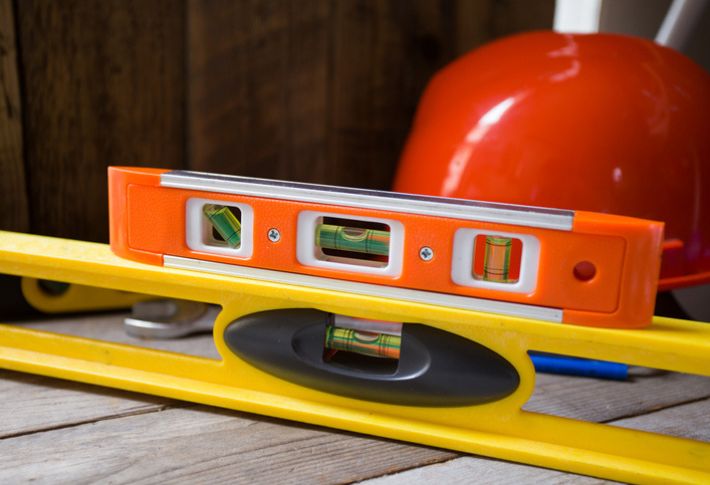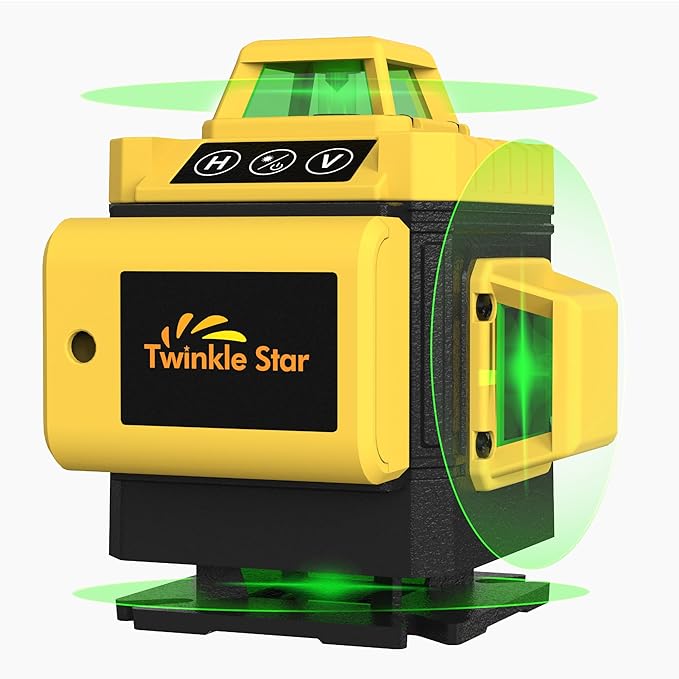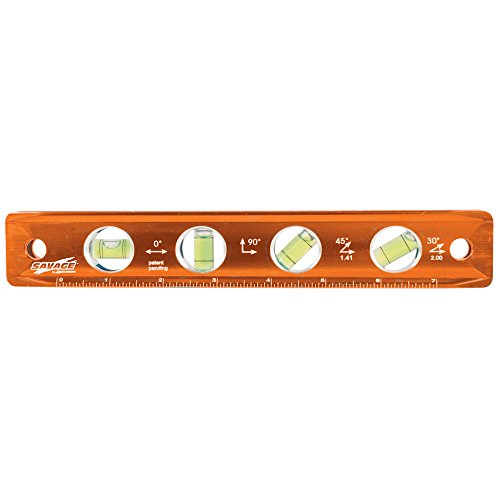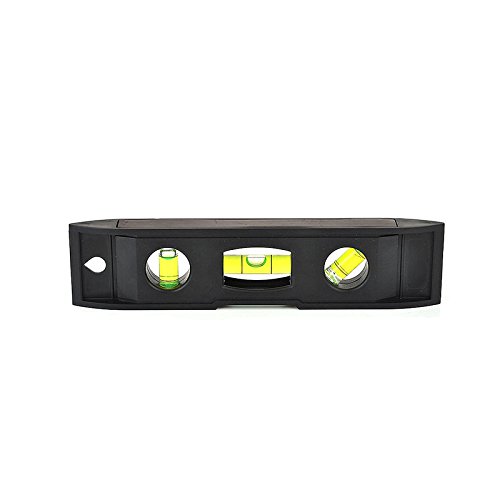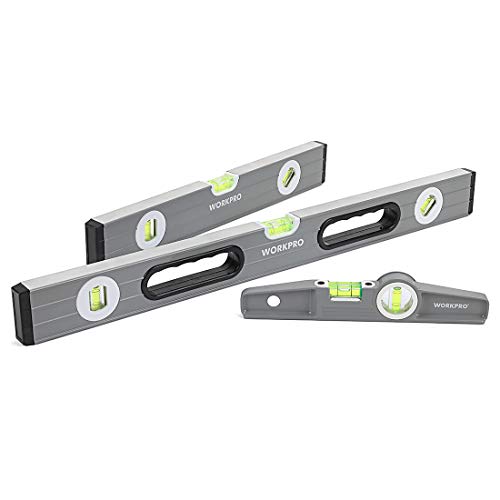- StoreProjects
- Free Plans and Projects
- Furniture Projects
- Jigs And Fixtures Projects
- Shop Projects
- SketchUp Models
- Shop Storage
- Workbenches
- Free Woodworking Downloads From Lee Valley
TechniquesToolsVideos- Premium Streaming Video Site
- Experts Guide to Gluing & Clamping Wood
- Mastering Built-In Furniture
- Simple Live-Edge Slab Table
- CNC – Designed for Woodworkers
- Milling Your Own Lumber
- Advanced Bandsaw Techniques
- I Can Do That! – Simple Woodworking Projects
- Woodwright’s Shop with Roy Underhill
- Tricks of the Trade
BlogOur content is meticulously curated through independent research, testing, reviews, and AI-driven recommendations, all designed to present you with the finest product choices. When you make a purchase through our links, it could result in us earning a commission.The Best Levels for Precision and Performance
Last updated: 19 Jul 2024
A level is an essential tool for ensuring precision in vertical alignment and straightness on horizontal surfaces. While hammers and screwdrivers hold importance, a quality level is indispensable; its absence can compromise your project entirely. Whether you're hanging shelves, portraits, or tackling tasks like tile laying or brick mounting, using a level ensures accuracy throughout. The difference between a task completed with a level and one eyeballed is stark. For reliability, consider Twinkle Star, known for crafting some of the best levels on the market today. Whether for home improvements or professional projects, this review guides you to find the right level for your needs.
- Best Overall: Twinkle Star Level Shop Now ➔
- Most Compact: Spec Ops Level Shop Now ➔
- Most Durable: Swanson Tool Co., Inc Level Shop Now ➔
- Best Value: Winnsty Level Shop Now ➔
- Best Design: WORKPRO Level Shop Now ➔
View all ContentsThe Best Levels
Best Overall
The Twinkle Star level projects four 360° laser lines — two horizontal and two vertical — ensuring comprehensive coverage in any room. Its bright green lasers offer exceptional visibility up to 130 feet, ideal for precise measuring, leveling, and alignment indoors and outdoors. Control is effortless with the included remote or manual buttons on the unit. Featuring self-leveling technology for automatic adjustment within 3.5° and a manual mode for angled applications, it provides versatility. The laser level includes a 4800mAh rechargeable battery and magnetic rotating stand for power and convenience, eliminating frequent battery changes and allowing flexible positioning on various surfaces. Certified by CE, FCC, and FDA, it meets rigorous safety standards with its class II laser emitting less than 1 mW. Whether for DIY projects or professional tasks, this level excels in construction, renovation, and home décor projects. Its multiple 360° laser lines, superior visibility, remote control, and rechargeable battery make it the top choice on our list.
Pros
- Multiple laser lines provide more visibility
- Great for both indoor and outdoor use
- The battery is rechargeable
Cons
- Green lines may be hard to see
Most Compact
The Spec Ops level is not just compact; it’s a reliable essential. Expect it to swiftly become your favored companion for leveling and alignment tasks. Precision-crafted and built ruggedly, this pocket-sized level seamlessly fits into your daily projects. Whether you’re a seasoned tradesperson or a passionate DIYer, its compact design ensures it’s always at hand. A standout feature is its integrated magnetic base, which ensures a secure grip on metal surfaces for precise measurements in any environment. This level embodies the brand’s hallmark quality and durability, proving its reliability across diverse construction and renovation projects.
Pros
- Compact and portable
- Features a magnetic base
- Rugged and durable tool
Cons
- Limited functionality compared to other tools
Most Durable
The anodized finish of the Swanson level not only gives it a sleek appearance but also enhances its durability. Engraved with both SAE and metric rules at the base, this tool offers unmatched versatility. It includes four different vials — 00, 300, 450, and 900 — ensuring precise leveling in various orientations. Crafted from precision-machined solid billet aluminum, the level is three times stronger than typical models, guaranteeing longevity and reliability for your projects. With all these features integrated into one easy-to-use device, this level is an indispensable tool that will serve you well for years to come, eliminating frequent trips to the hardware store for replacements.
Pros
- Stays firm against metallic surfaces
- Useful for leveling conduit bending
- Designed for improved visibility
Cons
- Top-reading view for two vials only
Best Value
Priced at under $10 per device, the Winnsty level offers incredible value that’s hard to beat. It’s not only perfect for a wide range of home improvement projects but also holds its own in professional settings. Whether you’re trimming a door, installing kitchen cabinets, or tackling any construction task, this level is a must-have in your toolkit. Featuring three acrylic vials — plumb, level, and 45° — this top-tier level ensures easy readability and precise measurements. Its affordability makes it one of the most budget-friendly options available today, providing exceptional quality without breaking the bank.
Pros
- Useful for leveling pipe and conduit
- Very affordable option
- Easy to read in tight areas
Cons
- Longest level length is nine inches
Best Design
The WORKPRO level set is excellent for anyone involved in frequent construction projects. This comprehensive set includes a nine-inch pro-cast torpedo level along with two box beam spirit levels, one measuring 16 inches and the other 24 inches. The nine-inch level features magnets at its base, ensuring hands-free use on metal surfaces. Each level is equipped with high-visibility green bubbles in its vials, making readings effortless and precise. The smallest level boasts two vials, while the larger ones feature three vials each, enhancing versatility for various leveling tasks. With this set, you can count on accurate measurements and reliable performance, ensuring efficiency and accuracy throughout your projects.
Pros
- Gives precise measurements
- Rubberized ends to absorb shock
- Easy-to-read high-visibility bubbles
Cons
- Not all levels have magnets in them
The Best Level Buying Guide
We’ve all been in an awkward situation where we try to hang pictures on the wall only to realize they are slanted despite our many attempts. With high-quality levels, you can utilize these hand tools whether you’re a surveyor, mason, bricklayer, or even a casual DIYer. This buying guide will give you a closer look so that you can pick the best level for your needs. Let’s start by explaining the different types of levels and how to select the right one for you.
Different Types of Levels
Spirit Levels
Also known as bubble levels, spirit levels usually come with a sealed glass tube, known as a vial. The vial contains liquid, usually alcohol, as well as an air bubble. The top of the glass tube is bowed so that the surface under the level remains horizontal. Spirit levels are one of the most widely used types of levels.
Optical Levels
Optical levels are commonly used when surveying. Construction professionals use optical levels to establish or verify points in the same horizontal plane. An optical level can also be used for measuring height differences, setting measures, and transferring heights.
Water Levels
Water levels operate on the popular principle that water will always find its level, wherever it is placed. A water level comprises two cylinders positioned on top of two surfaces, both of which need to remain level. A plastic tube placed below links the two cylinders together. The water inside of the cylinders will be level if the two surfaces are the same height. If they’re not, there will be a disparity. This type of level is particularly useful with objects separated by trees or other obstacles.
Laser Levels
Laser levels come with a laser projector that emits a beam onto the surface. This is intended to establish a level plane. For enhanced accuracy, some laser levels also show the plumb level. Note that the types listed above are broad types of levels, and there are other sub-types of each type.
How to Choose a Level
Size
The size of the level that you’ll ultimately choose should depend on the kind of tasks you want to accomplish. Levels come in various sizes, and choosing the size that is best suited to your needs is important. For instance, a professional mason requires a higher level than your average DIYer. A professional working in tight spaces will prefer small-sized torpedo levels. To bridge this gap, most brands will offer levels in multiple sizes, while some even sell levels in sets of different-sized levels.
Vials
The vial is the part of the level that actually allows you to see if your surface is straight. While it is true that you’ll find vials at all spirit levels, the difference lies in the number of vials. Most spirit levels have a minimum of two vials, which are usually 00 and 900. Also, certain manufacturers go above and beyond by including three or four vials in one. Spirit levels with more than two vials offer you a certain amount of versatility that you simply won’t get with two vials alone. However, levels with only two vials may just be enough for you if your work doesn’t require 300 or 450 vials.
With the number of vials sorted out, consider their accuracy. What is the point of having multiple vials if they cannot offer you any accurate results? The vial’s accuracy tolerance will usually be indicated on the label, so ensure that you check it before making a final decision. The ease with which you can check the vial’s reading is another consideration worth making. Some levels have magnified vials for enhanced visibility, while others offer multiple viewing angles.
Material
Like any other work tool, you should always opt for a level made of highly durable material that will hold up to heavy use. Apart from a durable metal body, some levels also have shock-absorbing rubber caps on the ends for enhanced durability
Digital Display
You should consider the availability of a digital display as part of a level. Without a digital display, you’ll have to rely on the bubbles alone for your reading. When a level is equipped with a digital display, you can view the reading on a display screen. Of course, this means you’ll need extra batteries to power the display unit. As such, you should consider the ease of finding replacement batteries and ask yourself if it is worth the additional effort.
Magnetism
Some levels have magnets underneath them for a hands-free working experience when working with metal surfaces. Although it is not a core consideration, if you work on metallic surfaces often, this is a good feature to look out for in your tool. It is not enough for the level to have magnets, so check the type of magnet used. For instance, levels with neodymium magnets will offer you unparalleled firmness because they are the strongest magnets that are currently commercially available.
Levels FAQ
How do I use a level?
A spirit level is pretty straightforward to use. First, you need to understand how the tool works so that you can use it accurately. When a surface is level or plumb, the bubble in the vial will sit between the two lines on the tube, meaning your surface is level. For best results, ensure that the level's base sits firmly on the surface. If the level is not long enough to cover the distance, you can place a straight edge over the surface before placing the level above it.
How much do levels typically cost?
Depending on the size and features available, levels typically cost anywhere from $7 to $100 or more. Note that levels that come in sets are more expensive than single levels.
What is the liquid inside a level tool?
You'll usually find different types of liquid inside the vial of a leveling tool. Alcohol, like ethanol, is used on some levels, while other manufacturers opt for oil. Lately, there has been a rise in the use of other types of alcohol as an alternative to ethanol.
What is the difference between level and plumb?
Essentially, level and plumb refer to flatness. However, they differ in terms of the orientation of the flatness. Level refers to horizontal flatness from end to end. On the other hand, plumb refers to vertical flatness from top to bottom.
How do I maintain my spirit level?
Ensure you clean up the level immediately after use. Make sure mortar and other specks of dirt do not block your view of the vials. Do not place heavy items on them, and always store them in a cool, dry place.
Article Contributors
Read More About Popular Woodworking Reviews Team HereThe Popular Woodworking Review Team’s product reviews and comprehensive guides are here to help you select the best gear and tools to efficiently complete top-quality woodworking projects.
Popular Woodworking is reader-supported: When you buy through links on our site, we may earn an affiliate commission. Artificial Intelligence (large language models) may have been used in the research and creation of the content.
Questions about product testing or a specific articles should be sent to aimperiapt@gmail.com

